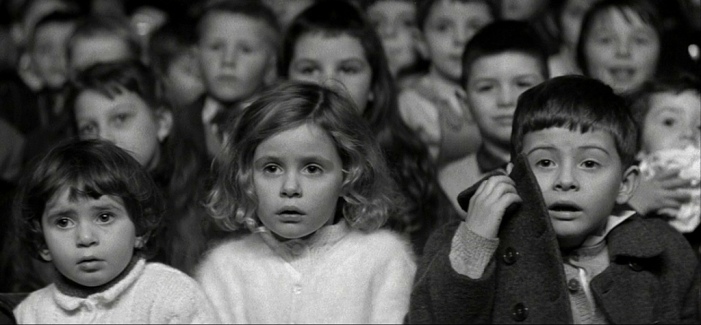The 400 Blows, by Francois Truffaut

This year marks the 60th anniversary of the release of Francois Truffaut’s The 400 Blows, a film that changed cinema—and on its debut, brought immediate recognition to the then-unknown director. In May, 1959, The 400 Blows won the Grand Prize for Direction at the Cannes Film Festival, when only the year before, Truffaut had been barred from the festival (as a young critic, he’d had the audacity to criticize the decorative flowers on the stage that blocked the audience’s view of the screen).
At the center of the film is the character of Antoine Doinel, who along with the actor who plays him, Jean-Pierre Léaud, serve as doubles for Truffaut, whose childhood and youth was the basis for the film. Like Antoine, Truffaut grew up in the Montparnasse district of Paris, had a strained relationship with his mother and the sometimes kind, sometimes cruel, attention of his adoptive father. As Antoine does, Truffaut struggled in school, preferring the cinema, and sneaking into theaters by sneaking in through a side door, and reading Balzac for hours. Antoine is unapologetic, even indifferent in the face of the adults’ criticisms.
“I lie… but only once in a while. At times, if I told the truth they wouldn’t believe me. So I tell lies.”
—Antoine Doinel, in The 400 Blows

Most notably, like Antoine, at the age of sixteen, Truffaut was turned over to the Paris police by his adoptive father, Roland Truffaut, for stealing a typewriter, and was sentenced by the court to serve a term in juvenile detention. At the time, French law gave a father the legal option to hand over authority of a minor boy to the corrections system, until legal age, if demanded. Article 375 as it was called, was abolished. But Truffaut was sixteen at the time of his detention, and the experience became a defining one—a kind of freefall that saw what little safety and security he had, fell away. The period became the basis for the semi-autobiographical film, and a career that ran until his death in 1984 at the age of 52.
The 400 Blows (Les Quatre cents coups—a French idiom meaning “to raise hell”)—reframed cinematic style and was among the films that gave rise to auteur cinema, or what French New Wave directors would call caméra-stylo (camera-as-pen). This cinematic new wave was a rejection of the films that dominated mainstream in the 1930s and 40s and forged new territory by featuring first-person narratives, marginalized characters and narrators, and a cinematic style that was at once gritty and elevated. Out of necessity, these auteur filmmakers improvised, using long tracking shots, jump cuts, and documentary-like mannerisms—low-budget techniques that brought fresh portrayals of character and story. The French New Wave resulted in a powerful intersection of style and story that would bring such films such as Eric Rohmer’s The Sign of Leo, and Claude Chabrol’s Le Beau Serge, both released in 1959, Jean-Luc Godard’s Breathless (1960), and Jacque Rivette’s Paris Belongs to Us (1961).
The 400 Blows would also establish a fundamental theme in Truffaut’s work, and in his life: his belief in the validity of the childhood point of view, and his longtime advocacy of the social welfare of children. “Most films about children make the child frivolous and the adult serious,” he once said. “Quite the other way around!” And children, as his film shows us, have a depth, flaws and all. As film historian David Melville wrote, “Allowing a

At seventeen, after Truffaut completed his sentence at The Observation Center for Minors, he wrote in a school essay, “Three films a day, three books a week and records of great music would be enough to make me happy to the day I die.” In those difficult early years, the strict diet helped the young Truffaut survive: music, books, and the cinema—the films of Jean Vigo (whose L’Atalante, nearly 80 years later, is nearly unmatched in its visual beauty), Jean Renoir, and American film noir. Decades later, The 400 Blows is still a raw, unfiltered look at how children survive when the adults around them fail—and in Antoine Doinel, a glimpse into what it means to be a child without a safety net.
Read Francois Truffaut’s last interview in the New Yorker.
—Lauren Alwan

